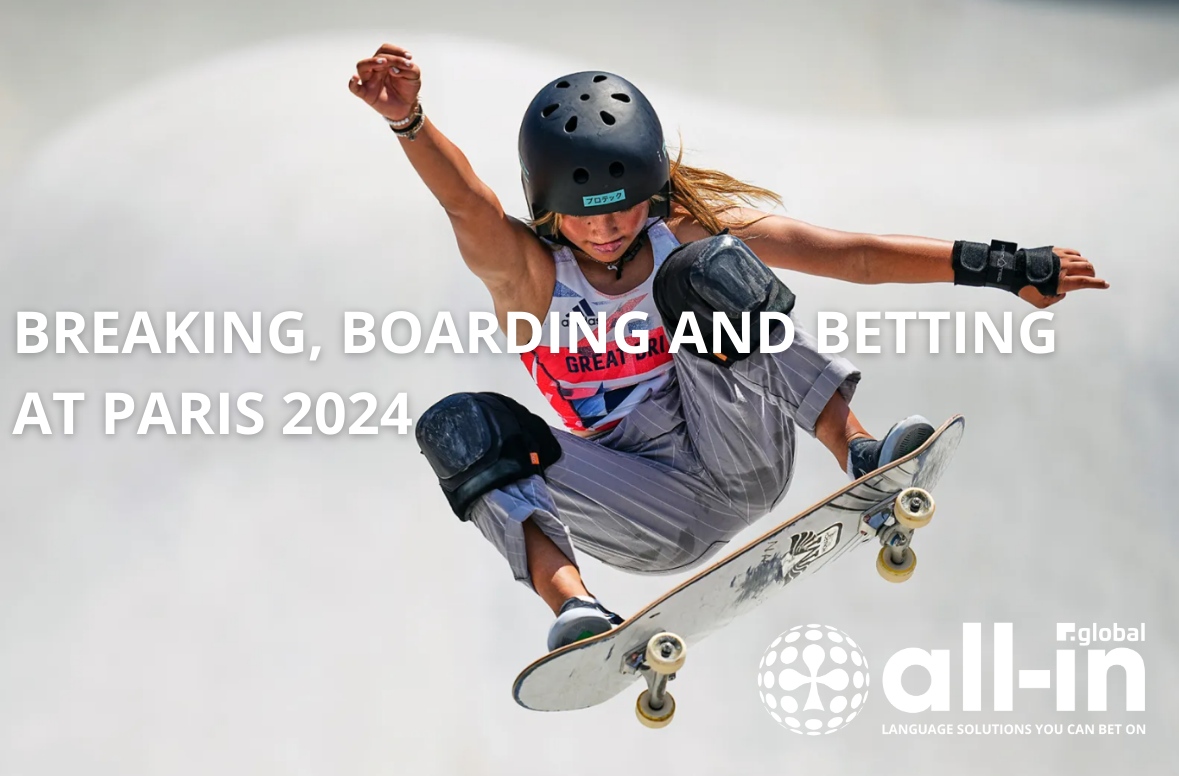
BREAKING, BOARDING AND BETTING AT PARIS 2024
12-year old Olympic medalists, venues once used for executions during the French Revolution and the one they call the ‘Nosegrind Master’ are part of your sporting and betting guide to surfing, breaking and skateboarding at the 2024 Olympics.
Surfing, breaking and skateboarding are three of the newest sports to be added to the Olympics and if you don’t know much about them, you’re about to find out what they’re all about: their history at the Olympics, the format of the respective competitions, any special rules to be aware of, some of the unique lingo used in the sport and a look at some of the biggest names in each one who could bring home the gold, along with the latest betting odds on them.
No sport is too obscure for our roster of writers at All-in Global, so here’s everything you need to know to place your bets.
The history of surfing and its history at the Olympics
The history of surfing goes back five thousand years when fishermen in Peru would use kayak-like boards made of reeds that they’d ride back to shore with their catch of the day. As its popularity increased throughout the 20th century, so did the calls for it to become an Olympic sport.
It made its debut at the 2020 Tokyo Olympics with Brazilian Italo Ferreira winning the men’s gold and the USA’s Carissa Moore the women’s gold. But representatives of host nation Japan made the podium in both events, with silver in the men’s, and bronze in the women’s event.
Dates and venue
The two events – men and women – will take place between July 27 and 31 at the 2024 Summer Olympics, or Jeux olympiques d’été de 2024, when translating from English to French.
The competition will be held in Teahupo’o in Tahiti, a French overseas territory.
Scarily, Teahupo’o loosely translates into English as ‘to sever the head’ or ‘place of skulls’, so that should give you an idea of the challenge out there in the sea for the Olympic competitors.
It’s the first time that an Olympic Games hosted in France will have an event in an overseas territory, providing the local community there with the chance to witness part of the Games first hand.
The format
For both events, there are three initial rounds, followed by the Quarter-finals, semi-finals and final, which are July 31. There’s also the bronze medal match on the same day.
Round 1 sees three surfers in each heat compete against each other, with the winner advancing to Round 3 and the two losers to Round 2, where there will then be eight heats of two surfers, with the winners of those progressing to Round 3.
From Round 3 onwards it’s ‘mano-a-mano’ with the winner of the round progressing and the loser going home.
Across the two competitions, there will be 48 surfers from 21 nations taking part, including from the likes of South Africa, Portugal, Brazil, Australia, Peru and the USA.
Special rules
Heats last between 15 and 45 minutes with the technical director deciding the exact duration based on the wave conditions.
During each heat, surfers will be judged on their two best waves. Judged by…five judges…based on the variety, type and difficulty of the tricks, with the speed, power and flow (transition from one move to the next) also taken into consideration.
Only shortboards, more manoeuvrable than longboards, are allowed.
Surfing slang
Surfing has its own culture and perhaps unsurprisingly, its own slang. So it’s a sort of localised language for those…located on their boards out at sea.
Surfing slang would make a whole article in its own right so here are just three expressions you should know.
Point Break – Yeah, just like the film. It’s an area where an underwater rocky point creates waves that are great for surfing.
Nose ride – The skill of manoeuvring a surfboard from the front end.
Snaking – The very much-frowned-upon act of a surfer who doesn’t have right of way/priority stealing a wave from another by taking off in front of them when the other surfer was closer to the peak.
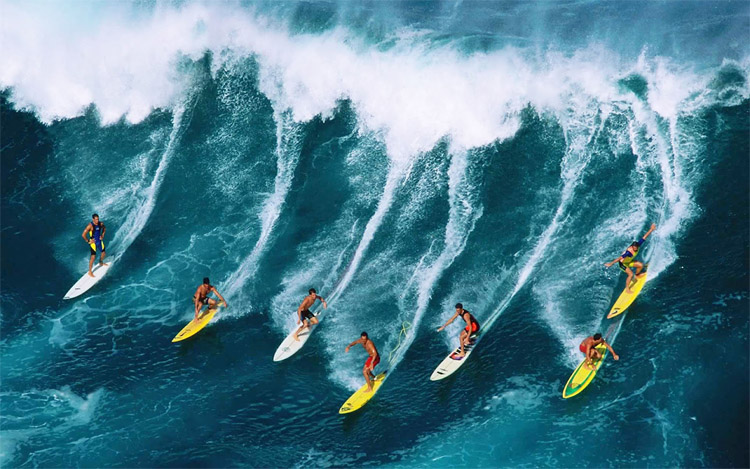
Betting: Who’s your money on?
If you enjoy sports betting at trusted sportsbooks online, and are looking to bet on surfing at the Olympics, you’ll be glad to know there are already some bookies offering odds on both the men and winner’s events.
Nearer the time, you’re also likely to be able to bet on the winner of each of the rounds.
Italo Ferreira isn’t around to defend his title this time round, but Brazil is well-represented nonetheless by Gabriel Medina, the 4.0 favourite. The 30-year-old from Sao Paulo is second only to Kelly Slater (him again) for the most World Titles from among those still competing on the men’s Championship Tour with 18, and a further 13 appearances in finals where he finished as runner-up.
John John Florence (USA) and Jack Robinson (Australia) are next in the betting at around 5.0.
But the one to keep an eye on might be Brazilian Filipe Toledo. One of the men to have taken Ferreira’s place on the Brazilian team this time round, he’s seen as a ‘small-wave wizard’ and the signs are that the waves at Teahupo’o will be just that: small. As one surfing journalist put it in real surfing terms: “It’s unlikely we’ll see a real banger of a swell’.
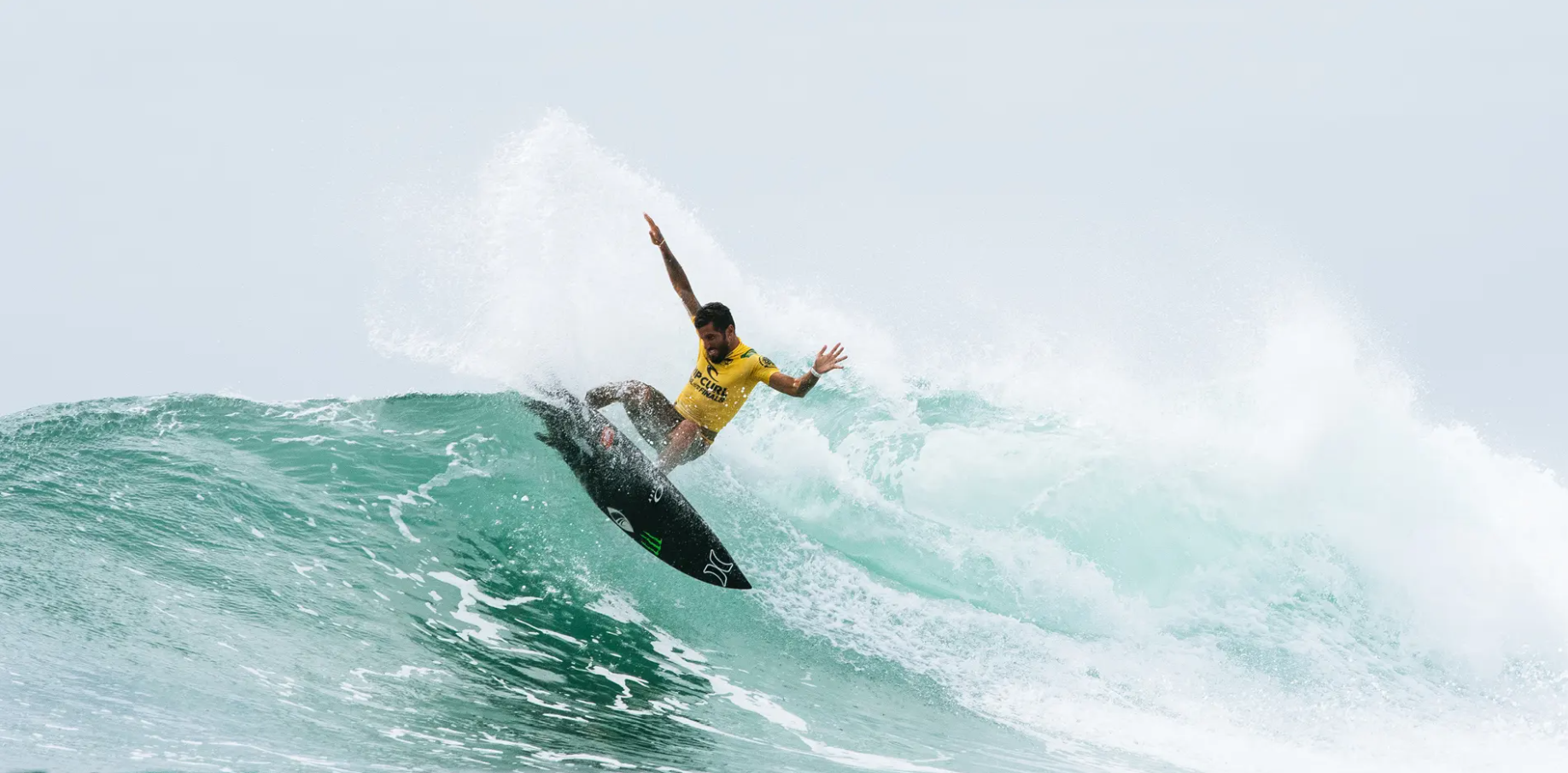
You can still get odds of 34.0 on him winning in conditions that could be tailor-made for him.
Unlike Ferreira, the women’s defending champion Carissa Moore is…back for more. She’s currently around the 8.0 mark with Vahine Fierro the 4.0 favourite and the one they’re all talking about in betting previews of the 2024 Olympics.
With just one career victory to her name, it may surprise some that she’s the favourite ahead of more experienced, more prolific winners.
But there’s a good reason for her being so fancied: though she represents France, she’s originally from French Polynesia and moved to Tahiti as a teenager so Teahupo’o is where she trains all year round. And it was precisely there that she won that single title, earlier this year. So, she knows the waves around there.

Top Trivia
- When Teahupo’o hosts the surfing events at the 2024 Olympics it will break the record for the longest distance (15,800km) between the host city and the venue where an Olympic event belonging to it will be held.
The history of breaking and its history at the Olympics
Featured in such TV programmes as 1980s hit Fame, plus movies like Flashdance and Step Up, throughout the decades it went from being an underground type of dance to a competitive urban sport alongside the likes of skateboarding and sport climbing, both also now Olympic Sports.
Breaking made its debut as an Olympic Sport at the 2018 Youth Olympic Games in Buenos Aires and will now take the step up to the Olympics proper for the first time in Paris.
Dates and venue
If you’re planning on watching it, August 9 and 10 are the dates to put in your diary. With the Olympic Games finishing on the 11th, it’s one of the very last events of the Games.
Appropriately, given its origins, it will be staged in the largest public square in Paris, the Place de la Concorde, also the venue for the BMX freestyle, skateboarding and 3×3 basketball events.
The first day consists of the women’s event (B-Girls), the second day being dedicated to the men (B-Boys).
There’s no messing around here in terms of time. 16 B-Girls and 16 B-Boys will start the day in contention and by the end of it, the first two Breaking Gold medallists ever will have been crowned.
Format
The day starts with a round-robin phase. The 16 competitors are divided into four groups of four. The Top 2 from each group then progresses to the quarter-finals, the four winners of that stage make it to the semis, then it’s the big final with one B-Girl/B-Boy then becoming an Olympic champion. The whole event shouldn’t last more than five hours from beginning to end.
Special Rules
Judges give Breakers points, each making up 20% of the score, based on five categories: musicality, vocabulary, originality, technique and execution.
Each Battle is best-of-three rounds and each Breaker has 60 seconds per round to impress the Judges.
The more maverick competitors need to ‘watch their step’ though, no pun intended: they can be penalised for misbehaviour.
Breaking slang
Want to sound like a sports content expert on breaking? Well, the first thing you want to avoid doing is calling it ‘breakdancing’.
Those ingrained in its sub-culture consider the term disparaging and ignorant.
Here’s some breaking jargon for you.
Freezes – The breaker suspends himself or herself off the ground, which requires huge body strength. Because a lot of breaking moves are in response to the actual music being played, freezes are used to emphasise strong beats in the music and often to signal the end of the set. Going from freeze to freeze in order to hit the beats of the music is known as doing so in ‘stacks’ while the ‘pike’ is one of the best-known examples of a freeze.
Flavor – Though breaking is the umbrella term for the style of dancing as a whole, there are different styles within it, which are often combined. One such style is flavor, where the emphasis is on dancing reactively to the beat of the music and musicality of the song, rather than performing pre-planned power moves irrespective of the beat being played. Breakers who do this are known as ‘style heads’.
Windmill – The breaker will roll their torso in a circular motion on the floor, while continuously twirling their legs in a V-shape through the air. Given it’s the basis for several other power moves, it’s one of the first power moves that breakers learn to execute.
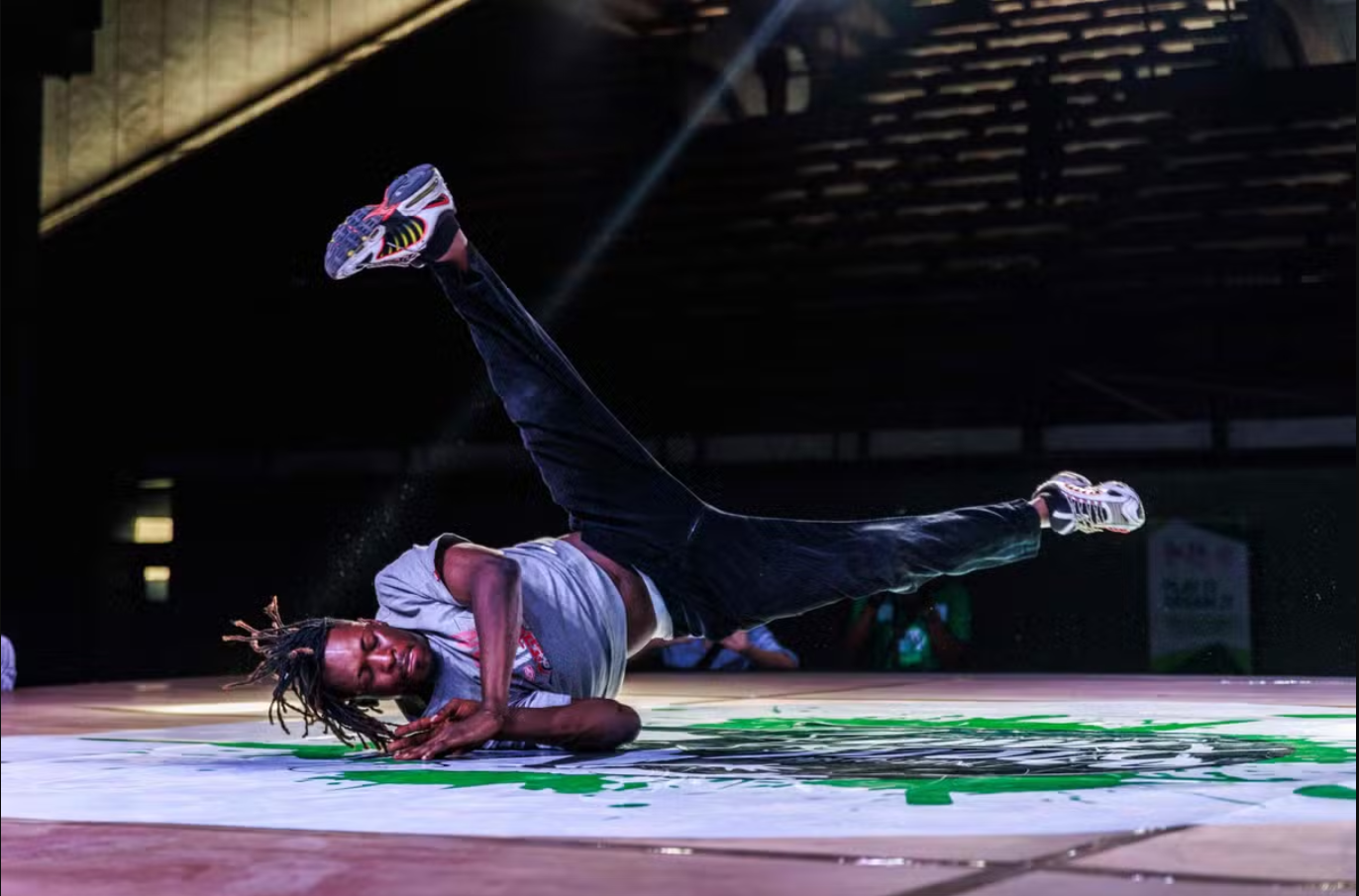
Betting: Who’s your money on?
As a new sport when it comes to betting on it, there isn’t much in the way of betting lingo or gambling words unique to it that sports betting writers tend to use, so that’s one less thing to worry about when reading sports betting content about breaking.
So who’s going to walk away from the Place de la Concorde with a gold medal around their necks? The available sports betting analysis content on breaking at the Olympics is undecided, so perhaps the latest odds can give us a better indication.
In the men’s category, five B-boys are available at odds of 10.0 or shorter.
The 2.75 favourite is current World Champion Victor Montalvo – performing name, Victor. No surprises the American is favourite because he’s the current World Champion after winning the 2023 WDSF World Breaking Championship in Leuven, Belgium, to go with his first place finish at the 2022 World Games in Birmingham.
But he’ll have his hands full if he’s to be last B-boy standing, or breaking, as the case may be.
He’ll have to beat Philip Kim (Phil Wizard) the Pan American champion who is available at 3.3, Asian Champion Shigeyuki Nakarai (Shigekix) who is 6.0, and Lee-Lou Demierre (Lee) of the Netherlands who is 10.0.
The ‘home challenge’ comes from 10.0 chance Danis Civil (Dany Dann). Representing France, at 35-years old he’s something of a veteran but is good evidence of the theory that if you’re good enough, you’re young enough, having been crowned European champion in 2023.
The women’s event may not be quite as open. Four different sportsbooks have laid the same odds of 4.0 on three different competitors as joint-favourites: Dominica Banevic (Nicka) of Lithuania, Liu Qingyi (671) of China and Ami Yuasa (Ayumi) of Japan. In the opinion of this sportsbook copywriter, if the odds compilers can’t split them, then neither can I.
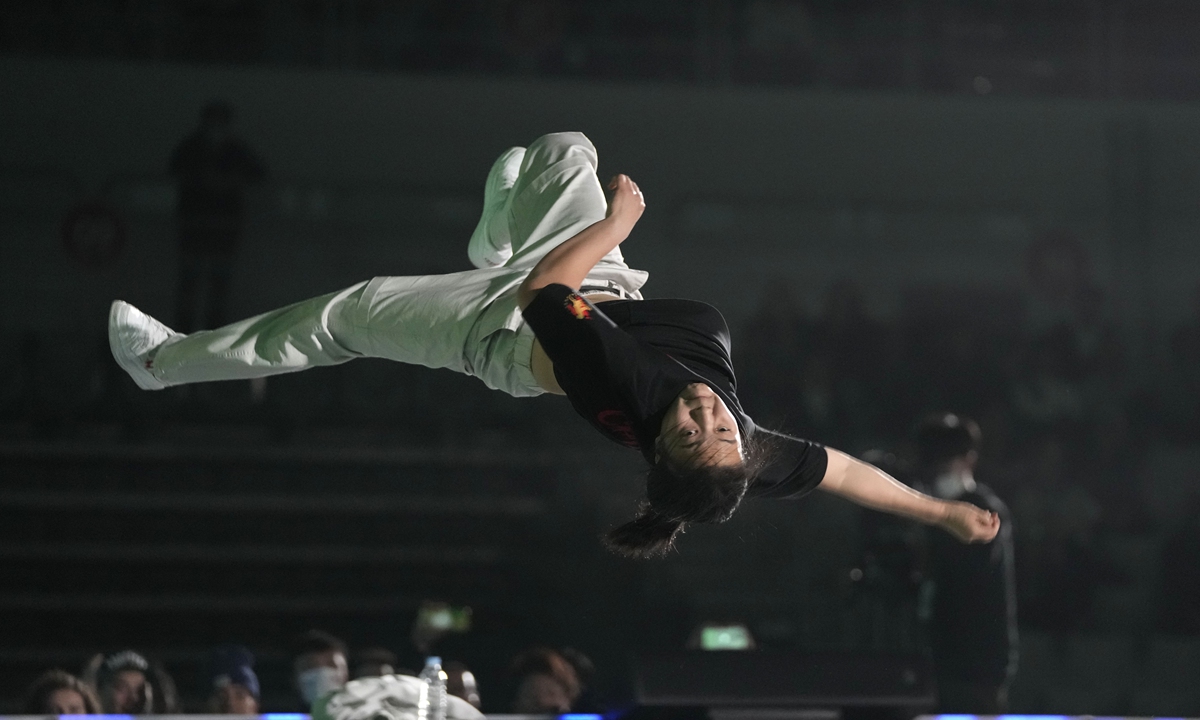
Top Trivia
- It’s somewhat fitting that the Place de la Concorde is where the world’s best breakers will be executing their moves. Some 250 years ago the Square was witness to very different sorts of executions. Such as those of Louis XVI, Marie Antoinette and Maximilien Robespierre, by guillotine, during the French Revolution, with these public executions thoroughly enjoyed by the watching bloodthirsty Parisian public.
The history of skateboarding and its history at the Olympics
Skateboarding’s roots can be traced back to the 1950s when they were made using a variety of wooden boxes or boards, with roller skate wheels attached to the bottom.
They were designed by bored surfers in California who wanted something active and creative to do when the waves were too flat for surfing.
Alongside the likes of surfing, it made its debut at the 2020 Olympics in Tokyo. Three of the four events were won by Japanese skaters but the poster girl for skateboarding at the Olympics was Sky Brown of Great Britain, who won bronze in the Women’s Park event. What was remarkable about her medal? The fact she was just 12 years old at the time, making her GB’s youngest ever medalist.
Dates and venue
As mentioned above, this is another event that will be held at the Place de la Concorde, which you already know all about.
There are four different events making up skating at the Olympics, held on these days:
27 July – Men’s Street Prelims followed by Men’s Street Final.
28 July – Women’s Street Prelims followed by Women’s Street Final.
6 August – Women’s Park Prelims followed by Women’s Park Final.
7 August – Men’s Park Prelims followed by Men’s Park Final.
Format
The two different events – Street and Park- follow slightly different formats and have slightly different rules.
Street
As the name suggests, it takes place on a course meant to replicate an actual street similar to the ones where skateboarding started out, with ledges, stairs and handrails in the vicinity that can act as both obstacles and accessories to a series of tricks.
It uses the 2/5/3 scoring system.
2 – The number of runs skaters do with their best run, scored 0-100, being the one that counts towards the skater’s score.
5- The number of tricks they have to perform. Skaters then take their two best scores on the tricks (also 0-100).
3- The number of scores each skater is ultimately judged on: 1 Best Run + 2 Highest-Scoring Single Tricks.
This will give each skater a final score between 0 and 300.
The Top 8 advance from the preliminary rounds to the final and then they go through the same process again to find the eventual winner, and the other medallists.
Park
This one takes place on a varied course that combines bowls and numerous bends.
Skaters perform three 45-second runs and their highest-scoring one is the one that counts. Points are awarded taking into account the height, difficulty and variety of the skater’s tricks, alongside the speed and flow with which they cover the course.
During each of the two runs, five judges will score them between 0-100. The best and worst scores are discounted, leaving the three middle ones to produce an overall score of 0-300, the same as in the street competition.
Special Rules
In the Park event, there’s a special rule that allows each skater to scrap one of their tricks just the once and have a chance to repeat it in a bid to improve on their original score. But if the score is worse the second time round, that’s just tough luck!
Skateboarding slang
Here at All-in Global, we boast some of the best sports copywriters who create some of the top sports betting content writing services that money can buy within iGaming. But even a few of our sports copywriters could find themselves a bit stumped when it comes to some of the expressions widely used in the world of skateboarding.
ABD – Short for ‘already been done’, you’d be perfectly within your rights to use it when explaining to an excitable skater that there’s nothing new about that particular move.
Brain Bucket – To quote a well-known credit card company, ‘never leave home without it’…if you’re a skateboarder. A brain bucket is a helmet and could be the difference between a little bump and a really nasty head injury.
Drop In – To you it may mean showing up at your friend’s house unexpectedly for a chat and a cup of tea. To a skater it means entering a bowl or halfpipe from the top.
Indy Grab – The next time you’re skating in mid-air, you may consider grabbing the skateboard with your back hand. Pull it off and you’ve just executed an Indy Grab.
Ollie (flip) – For the novice, it will take time to master. For the pro, it’s child’s play as a trick in which the skater uses his or her feet to pull the board up into the air.
Wipe Out – It’s hard to know what’s worse: the embarrassment of it happening to you with everyone watching, or the bruises that are likely to result from it. It’s when you fall off the skateboard.

Betting: Who’s your money on?
The Men’s Street event may prove to be the tightest of the four.
Nyjah Huston of the USA (4.5), plus Japanese trio Ginwoo Onodera (also 4.5), Sora Shirai (5.0) and Yuto Horigome (5.5) are the early favourites and the smart money is on the winner coming from this group of skateboarding stars.
The one likely to attract the most media attention is Onodera. Whereas most 14 year-olds may be taking part in Olympics skateboarding events on their Playstation, Onodera will be doing so for real. Despite his age and limited power, he continues to upset the odds at the biggest tournaments and this one might be no different.

But Onodera is unlikely to be the only teenager making the skateboarding podium in Paris.
The Women’s Street event could see three different skaters with the word ‘teen’ at the end of their age collect medals.
That girl Sky Brown, now 16, will look to improve on her bronze medal from Tokyo as the 4.5 second-favourite.
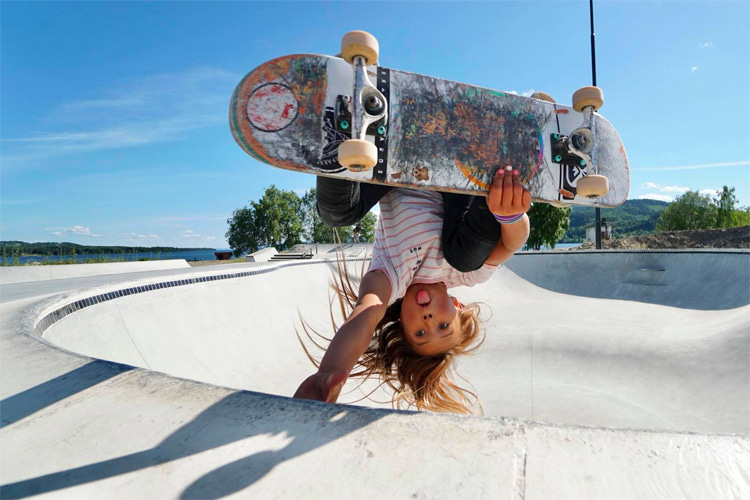
She’s a year older than Japan’s Hiraki Cocona (also 4.5), who is nicknamed the ‘Nosegrind Master’. Cocona finished in the Top 5 in all the five qualifying events for the Olympics, so she’s certainly consistent enough.
Yet it’s 14-year old Aussie Arisa Strew who’s the 3.25 favourite, and this despite being ranked just 14 in the world at present.
Skateboarding really is one for the youngsters, even at Olympic level, because in the women’s other event, the Street competition, another 14-year-old Australian could easily be making the long trip back home with a gold medal in her luggage.
Sharing the same February 8 birthday as the sports betting content writer giving you the lowdown on these three Olympic sports, Chloe Covell took up the sport aged six when watching the Paris 2024 Men’s Street favourite Nyjah Houston competing at the X Games on TV.
She’s the 5.0 third favourite in the Women’s Street, behind Japan’s Liz Akama (3.25) and Rayssa Leal (4.5) of Brazil.
Top Trivia
- In May 2023 the aforementioned Ginwoo Onodera became the youngest winner of the men’s street skateboarding competition at the X Games (13 years, 88 days), a feat recognised by the Guinness Book of Records in 2024.
- The Sky’s the limit for…Sky Brown. But she’ll probably have to wait till the 2028 Los Angeles Olympics to represent Great Britain at surfing. Having decided that being an Olympic medallist in one event wasn’t quite enough, she tried to qualify for the surfing as well and just missed out, though she is Team GB’s first reserve. So she may still be called upon to participate.
- USA and Brazil are the only countries to boast 12 skaters across the four skating events at the 2024 Olympics.
At All-in Global, we provide translation and content writing in 85 languages for the iGaming and sports betting industry. Contact [email protected] if you are looking to expand your business to new markets and reach a wider audience with our Language Solutions You Can Bet On.

